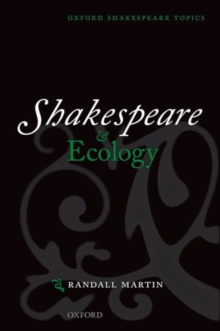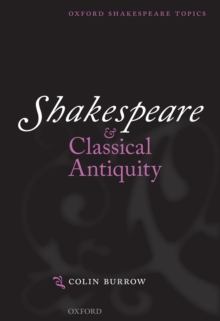
Description
OXFORD SHAKESPEARE TOPICSGeneral Editors: Peter Holland and Stanley WellsOxford Shakespeare Topics provide students and teachers with short books on important aspects of Shakespeare criticism and scholarship.
Each book is written by an authority in its field, and combines accessible style with original discussion of its subject. This book traces Shakespeare's portrayal of outsiders in some of his most famous plays. Some of Shakespeare's most memorable characters are treated as outsiders in at least part of their plays—Othello, Shylock, Malvolio, Katherine (the 'Shrew') , Edmund, Caliban, and many others.
Marked as different and regarded with hostility by some in their society, many of these characters have become icons of group identity.
While many critics use the term 'outsider,' this is the first book to analyse it as a relative identity and not a fixed one, a position that characters move into andout of, to show some characters affirming their places as relative insiders by the way they treat others as more outsiders than they are, and to compare characters who are outsiders not just in terms of race and religion but also in terms of gender, age, poverty, illegitimate birth, psychology,morality, and other issues. Are male characters who love other men outsiders for that reason in Shakespeare?
How is the suspicion of women presented differently than suspicion of racial or religious outsiders?
How do the speeches in which various outsiders stand up for the rights of their group compare? Can an outsider be admired? How and why do the plays shift sympathy for or against outsiders?
How and why do they show similarities between outsiders and insiders?
With chapters onMerchant of Venice, Twelfth Night, Othello, King Lear, The Tempest, and women as outsiders and insiders, this book considers such questions with attention both to recent historical research on Shakespeare's time and to specifics of the language of Shakespeare's plays and how they work on stage andscreen.
Information
-
Download - Immediately Available
- Format:PDF
- Publisher:OUP Oxford
- Publication Date:27/06/2013
- Category:
- ISBN:9780191664915
Information
-
Download - Immediately Available
- Format:PDF
- Publisher:OUP Oxford
- Publication Date:27/06/2013
- Category:
- ISBN:9780191664915










